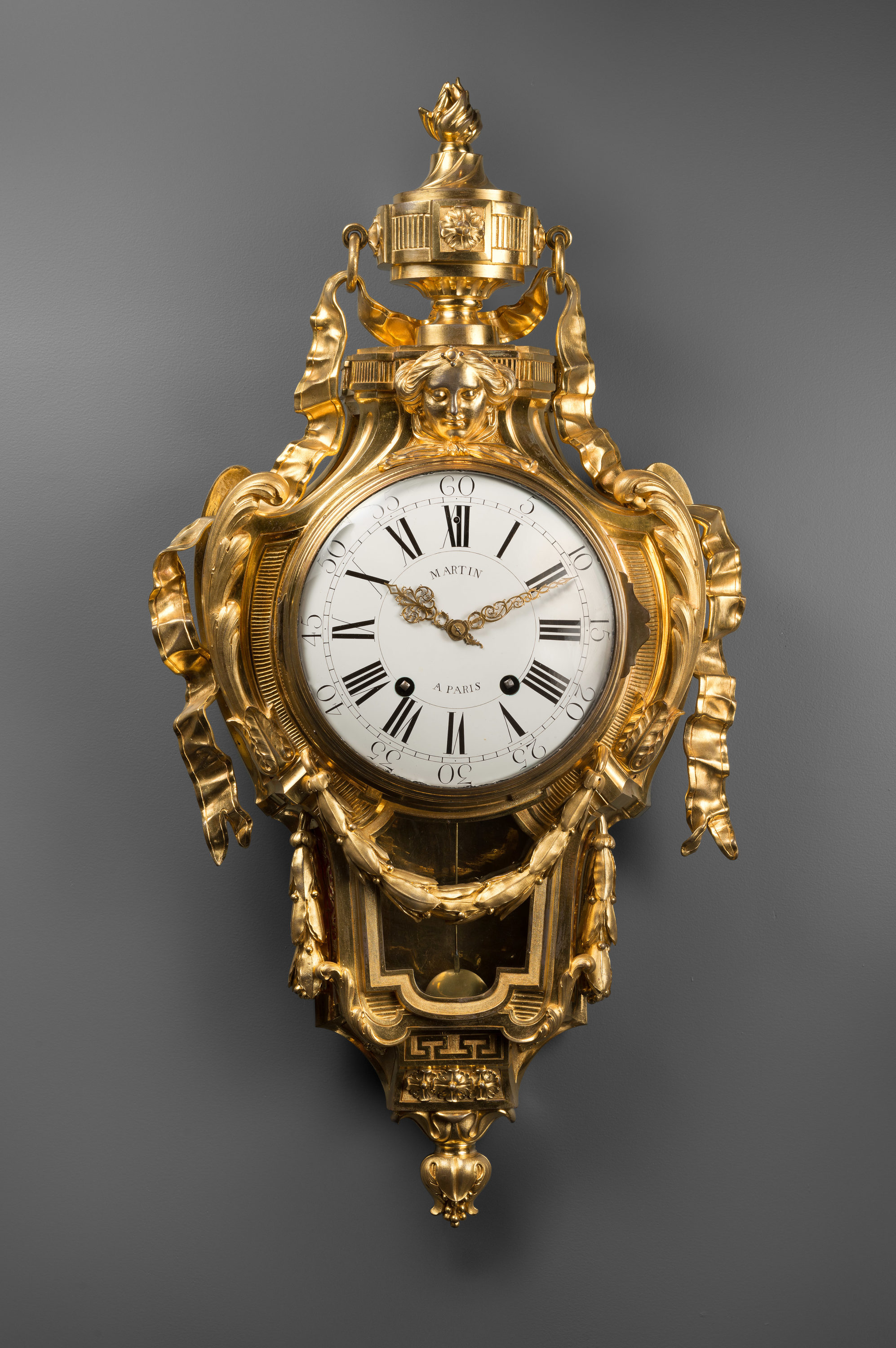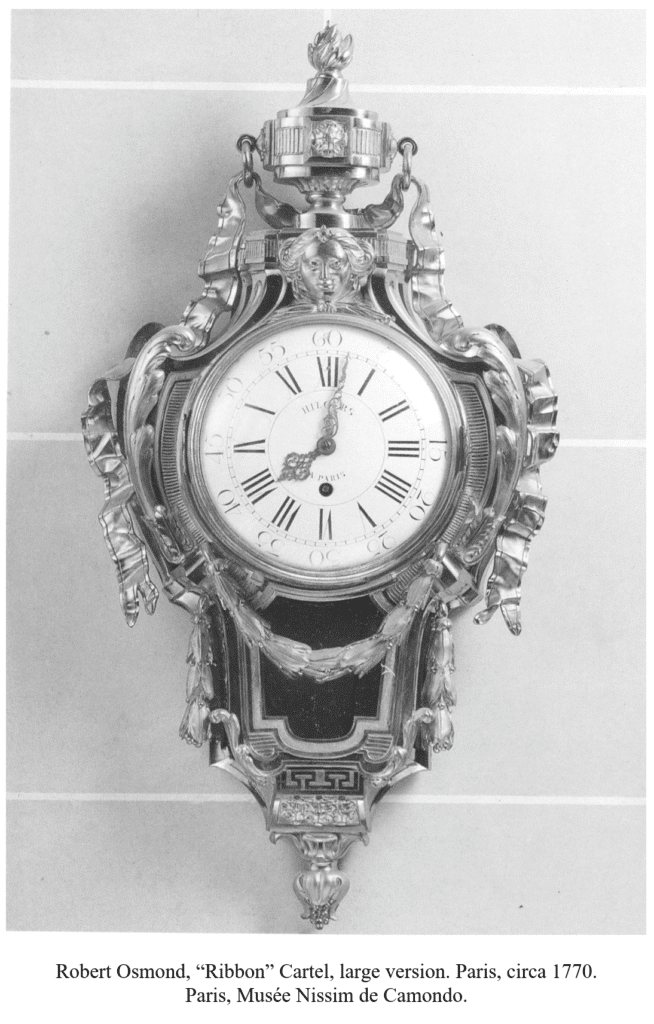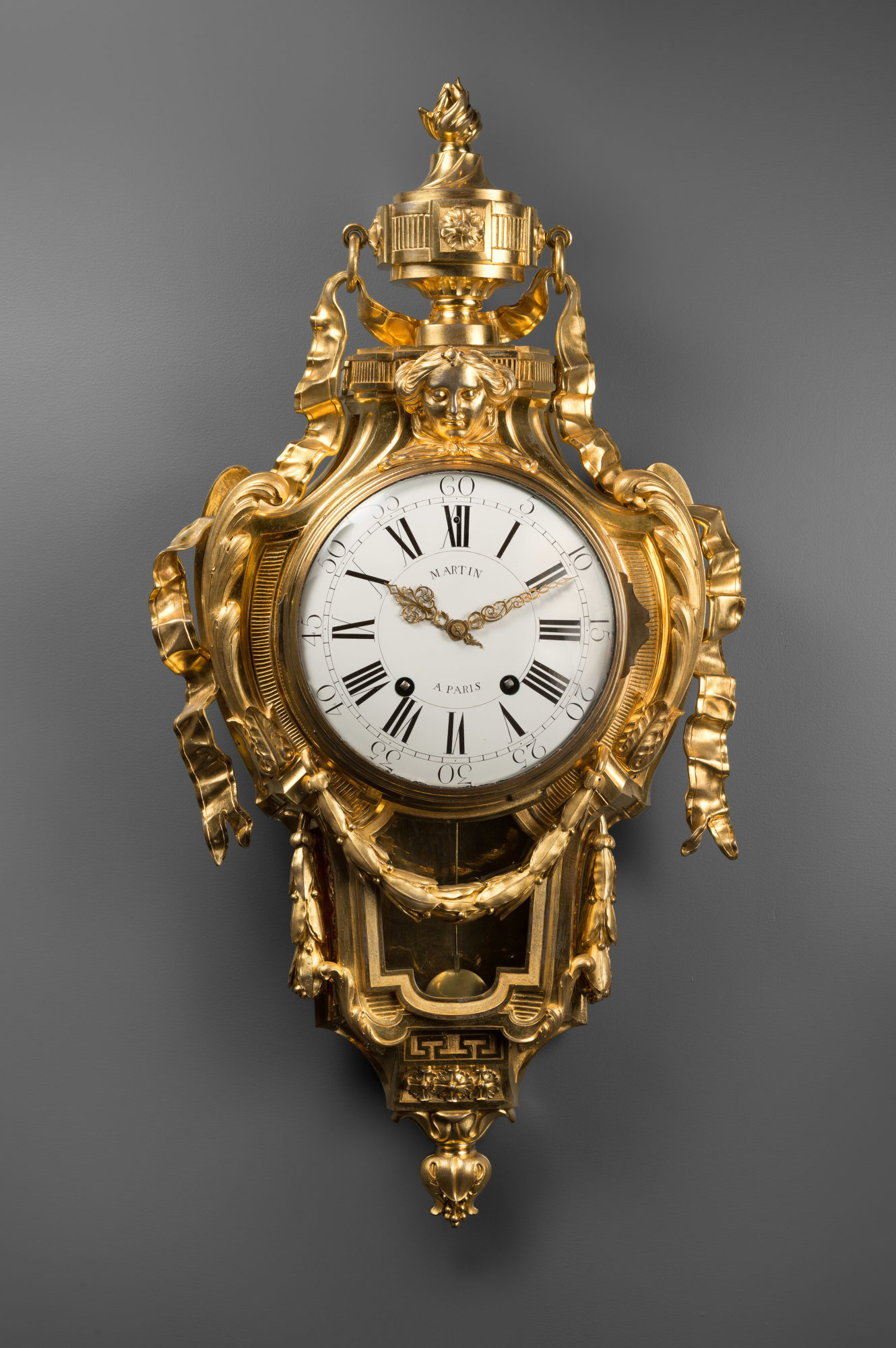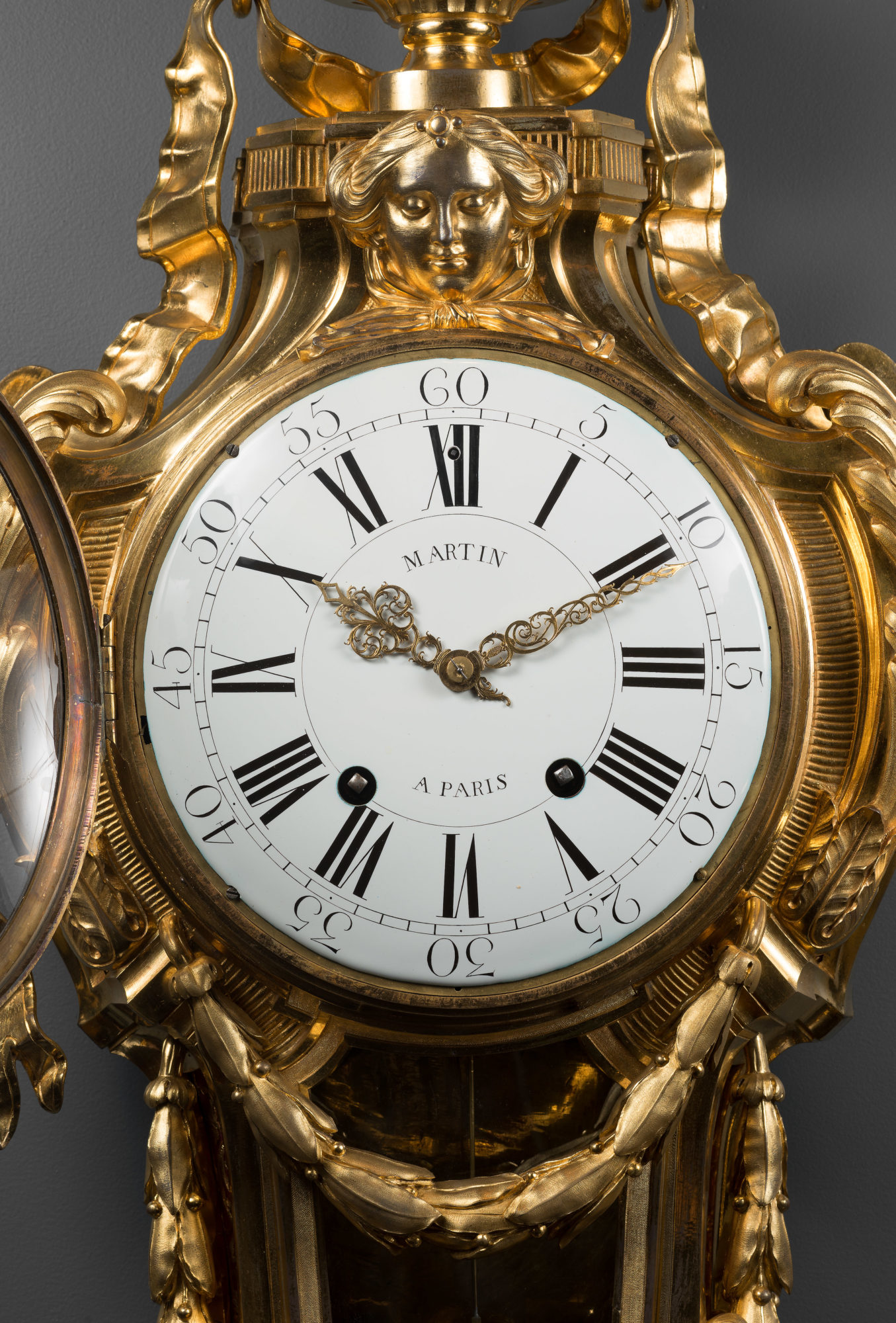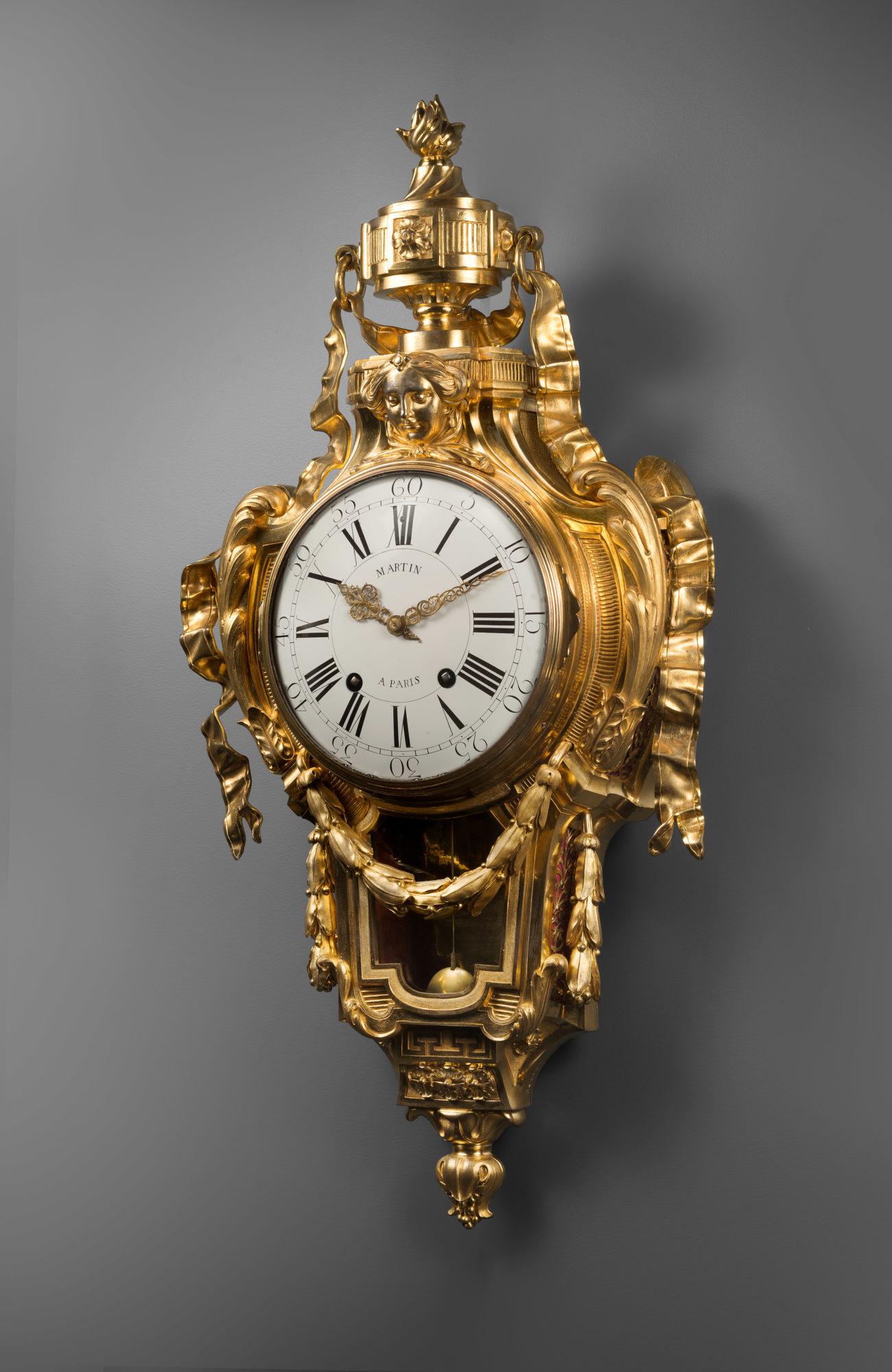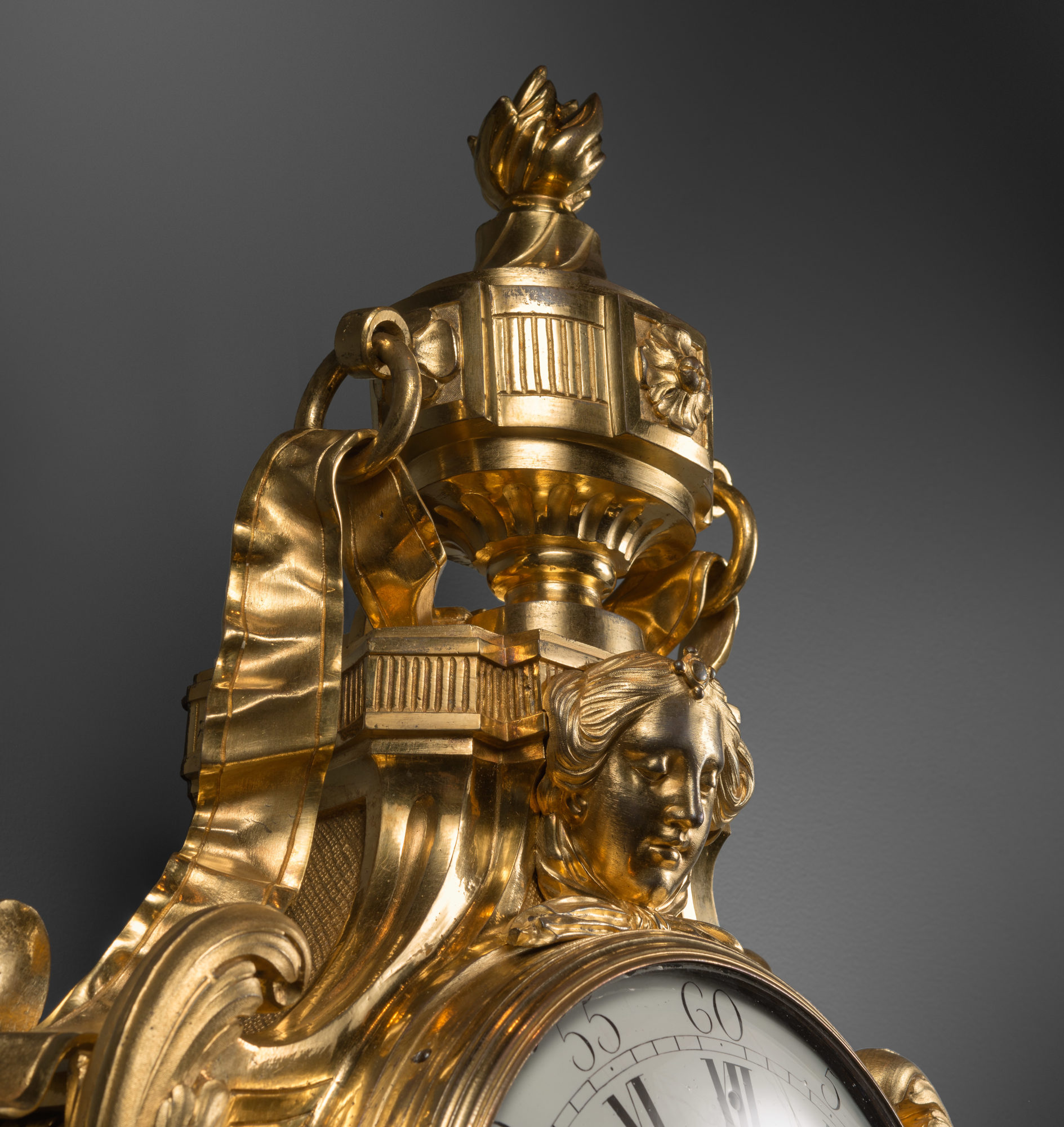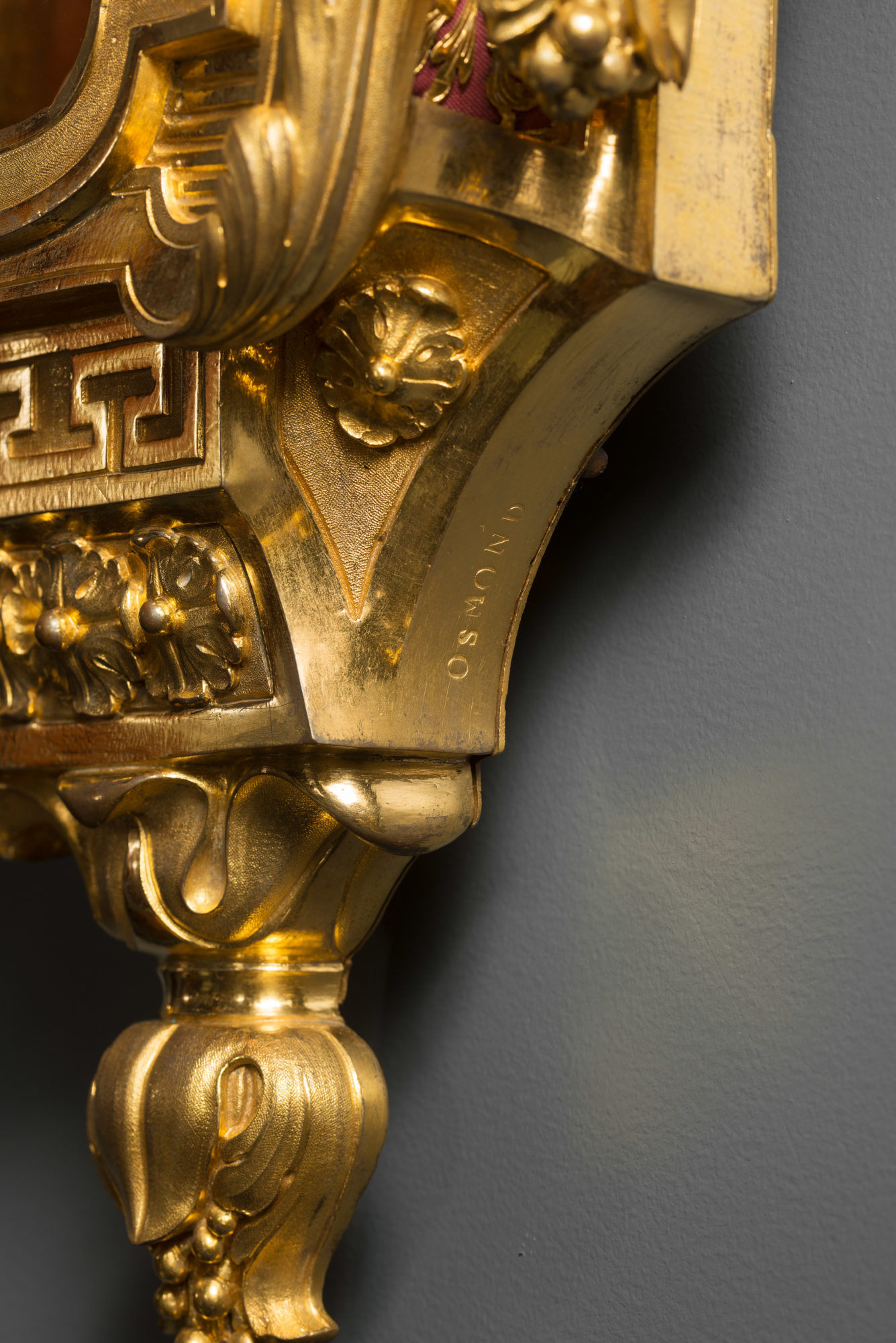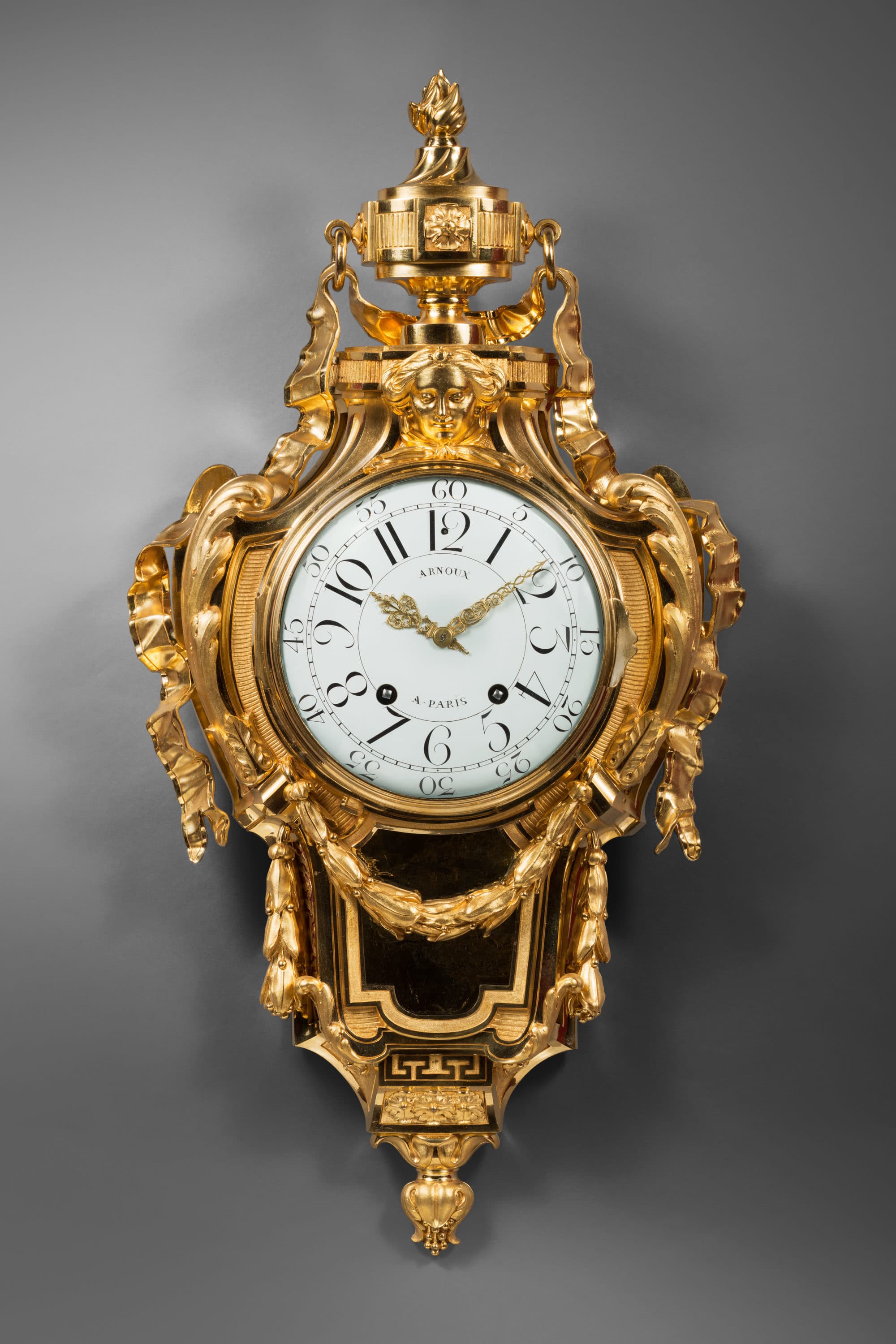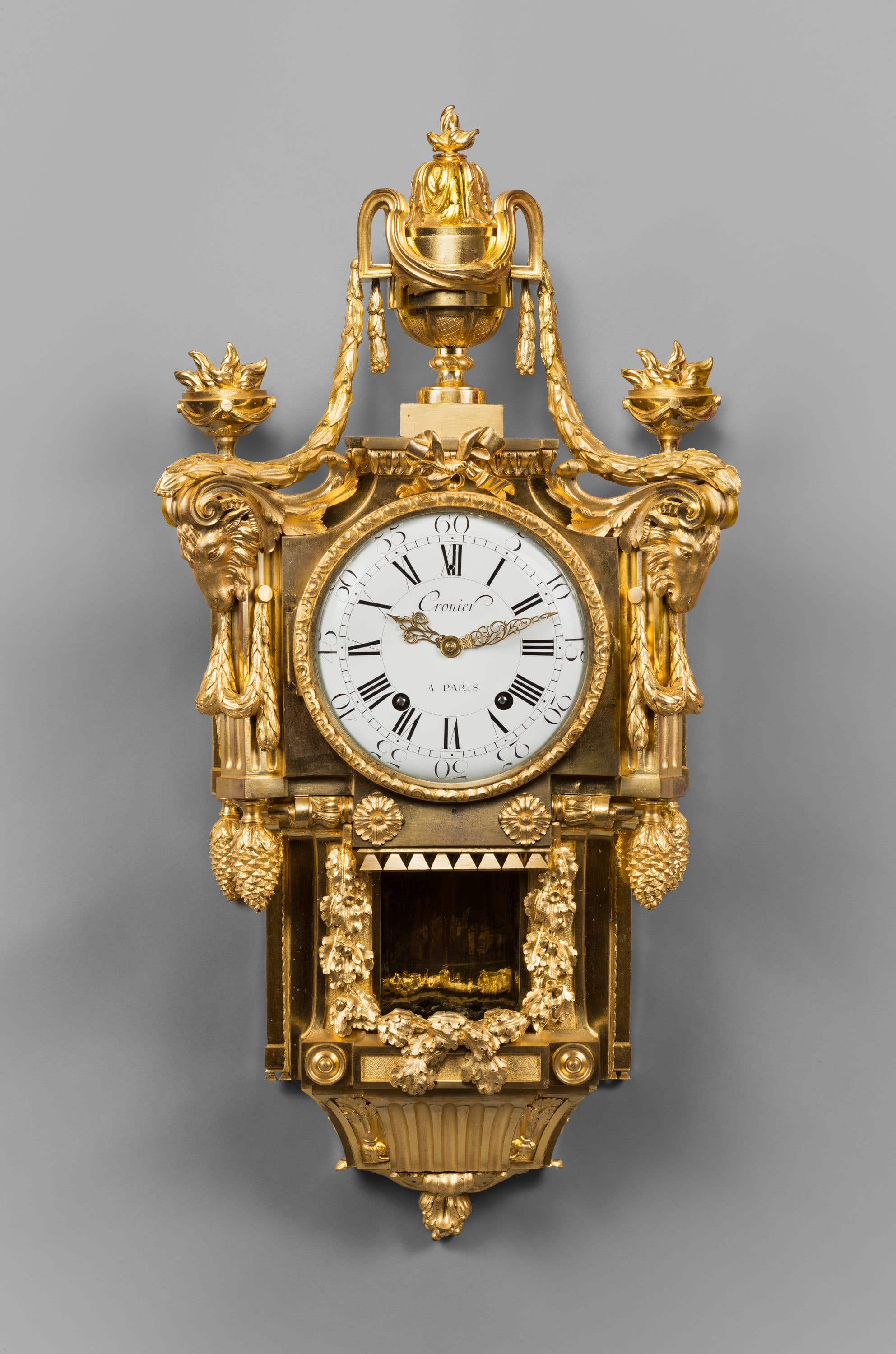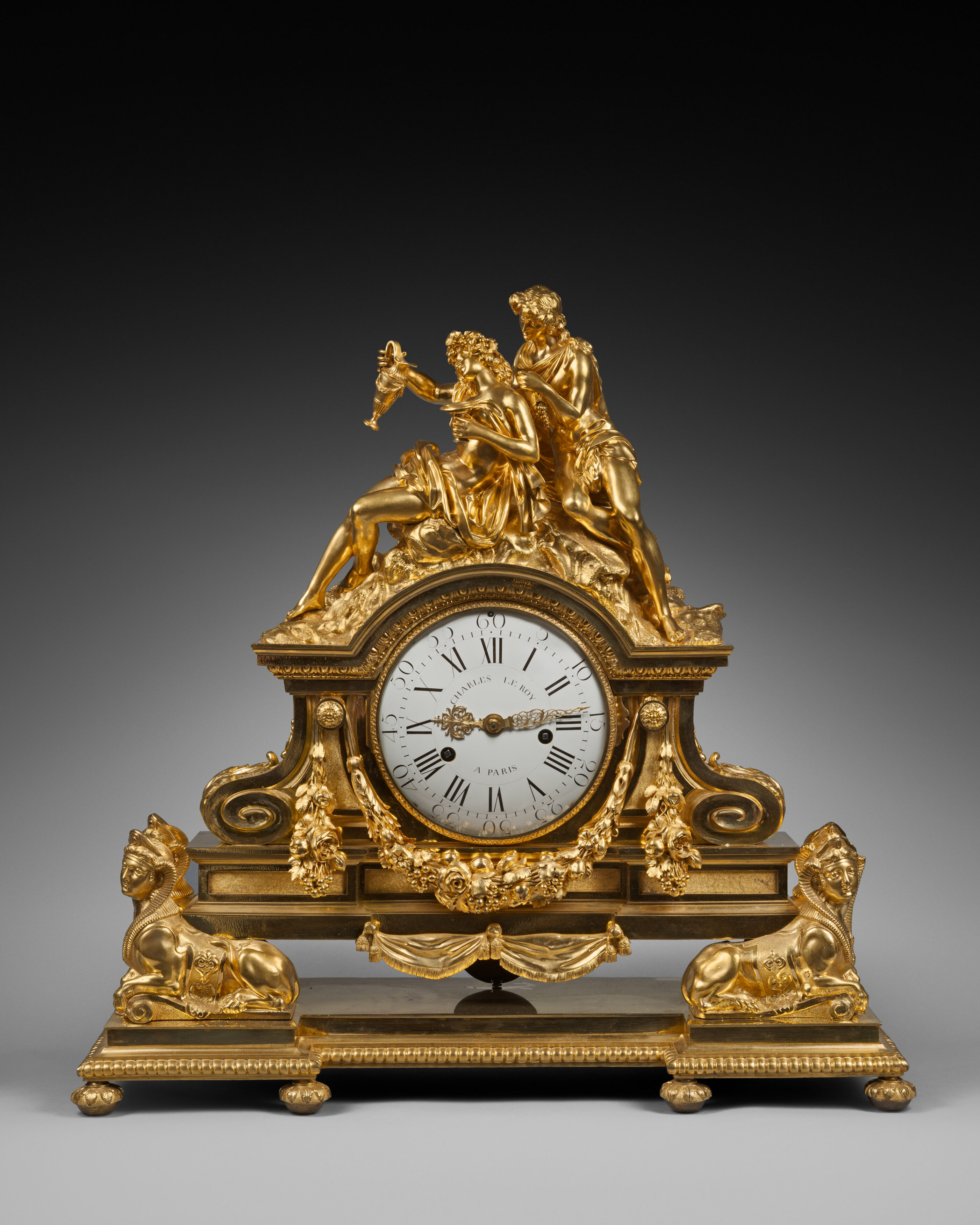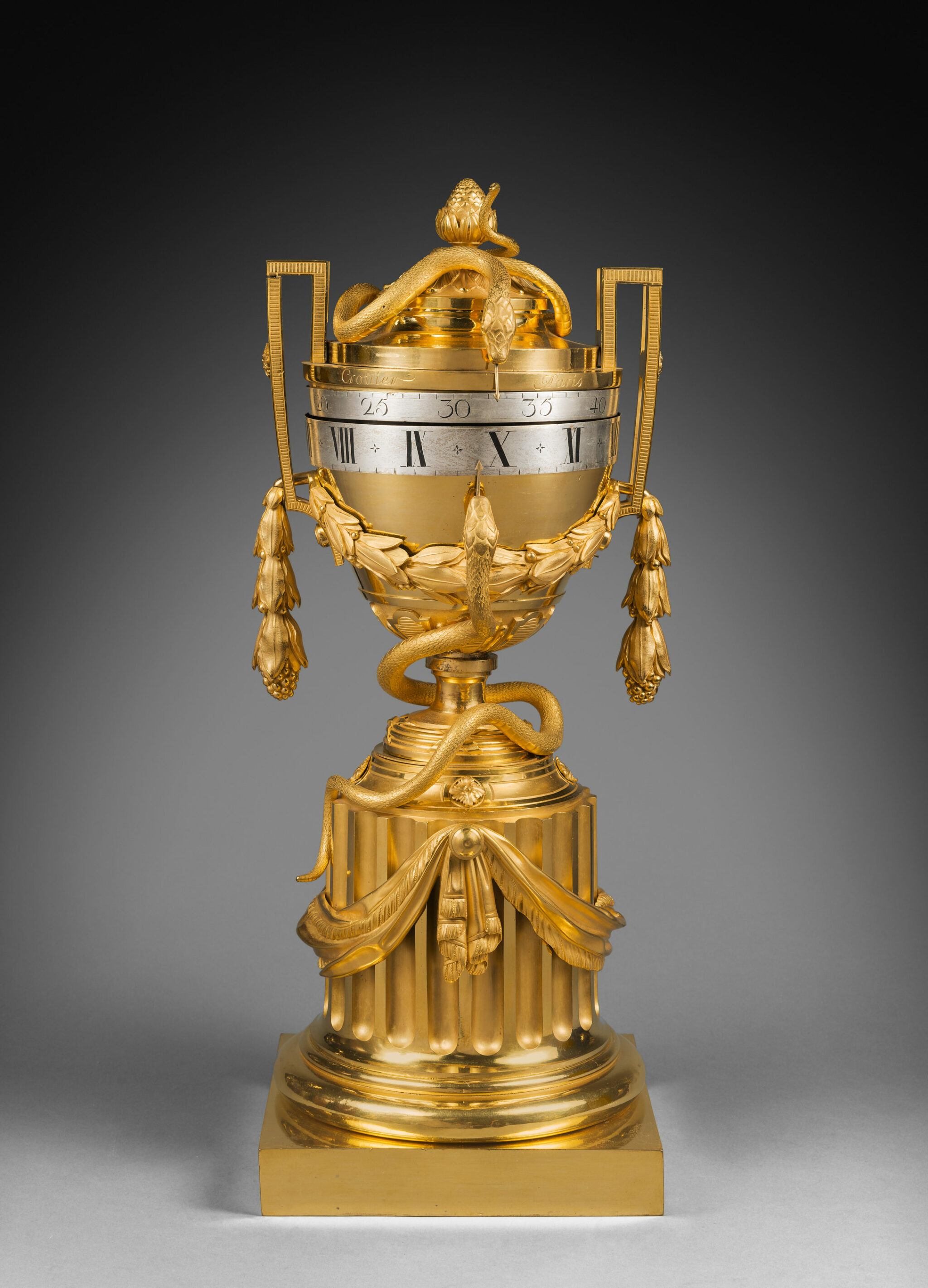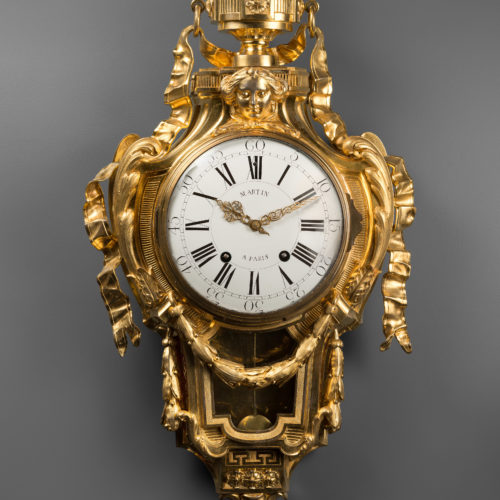Important Gilt Bronze Wall Cartel, “Ribbon Cartel, Large Version”
“Royal Model”
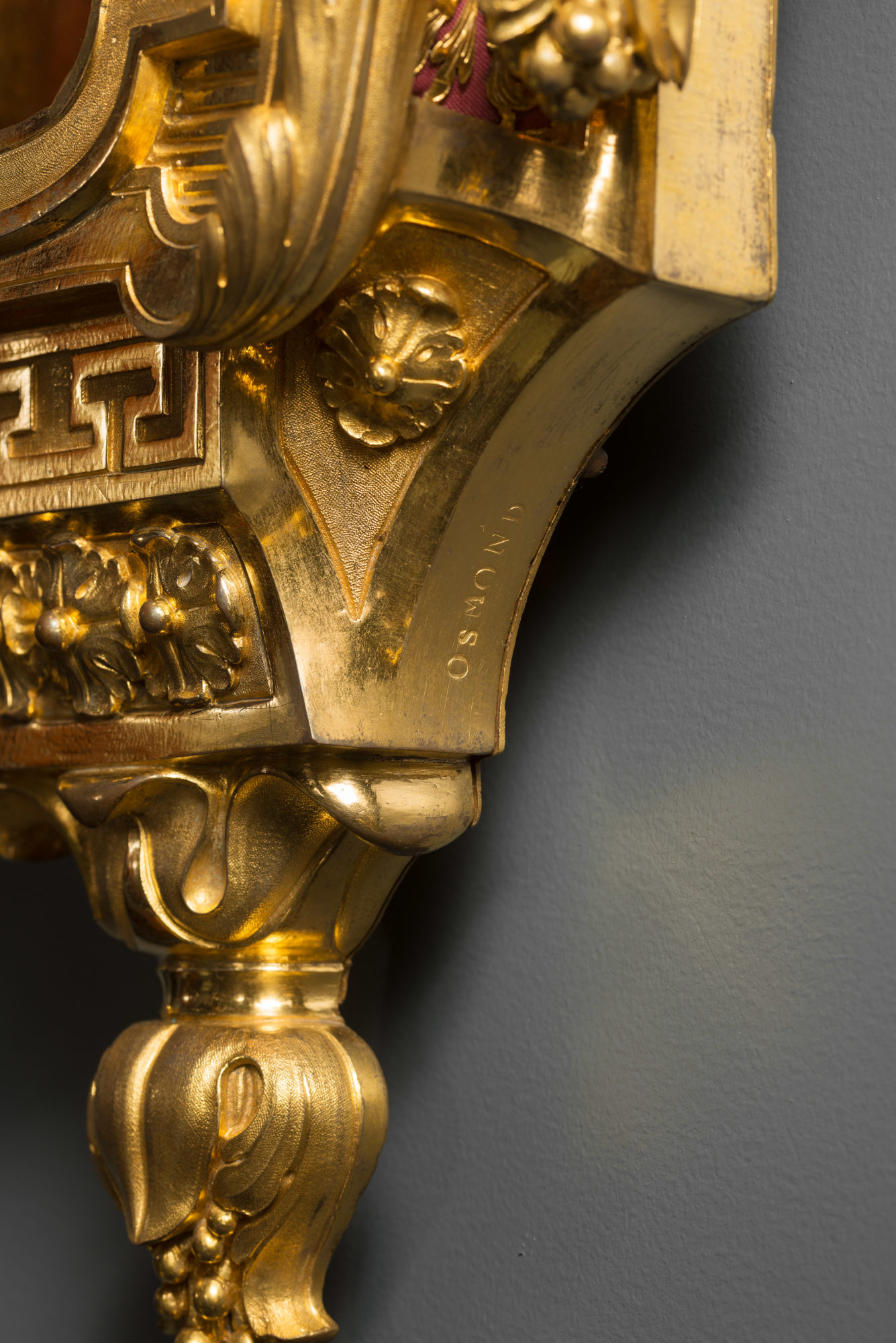
Case signed on the side: OSMOND
Paris, Transition Louis XV-Louis XVI period, circa 1770
The round enamel dial, signed “Martin à Paris”, indicates the hours in Roman numerals and the five-minute intervals in Arabic numerals by means of two pierced copper hands; the Neoclassical case is very finely chased and gilt. The bezel is punctuated with engine turned reserves and wide leaves; at the summit of the clock there is an antique flaming urn decorated with fluting and rosettes. A long ribbon passes through its handles and hangs down on either side; a female mask surmounts the dial. The lower portion features a draped laurel leaf and seed garland; below there is a leaf and seed finial.
Discover our entire collection of antique cartel clocks for sale online or at the gallery.
The design of the present cartel is illustrated in the book Livre de desseins, in the collection of the Institut d’Histoire de l’Art in Paris (illustrated in H. Ottomeyer and P. Pröschel, Vergoldete Bronzen, Band I, Munich, 1986, p. 184, fig. 3.8.8). This elegant and perfectly balanced model became immediately successful with Parisian collectors of the second half of the 18th century and was particularly appreciated by the members of the royal family. One example was delivered by the clockmaker Lépine in 1767 to the apartments of Mme Victoire de France at Versailles; a second clock was ordered several years later for the apartments of the Dauphin, future Louis XVI, at Versailles; this is almost certainly the example in the collections of the Mobilier national (see the exhibition catalogue Le château de Versailles raconte le Mobilier national, quatre siècles de création, 2010-2011, p. 106-107).
Very few identical models are known: among them, one clock is displayed in the Nissim de Camondo Museum in Paris (featured in “L’ANCAHA au musée Nissim de Camondo”, in ANCAHA, winter 1999, n° 86, p. 38); a second example is in the National Museum in Stockholm (illustrated in Tardy, La pendule française, 2ème partie: Du Louis XVI à nos jours, Paris, 1975, p. 309).
Robert Osmond (1711 - 1789)
French bronze-caster Robert Osmond was born in Canisy, near Saint-Lô; he began his apprenticeship in the workshop of Louis Regnard, maître fondeur en terre et en sable, and became a master bronzier in Paris in 1746. He is recorded as working in the rue des Canettes in the St. Sulpice parish, moving to the rue de Mâcon in 1761. Robert Osmond became a juré, thus gaining a certain degree of protection of his creative rights. In 1753, he sent for his nephew in Normandy, and in 1761, the workshop, which by that time had grown considerably, moved to the rue de Macon. The nephew, Jean-Baptiste Osmond (1742-after 1790) became a master in 1764 and as of that date worked closely with his uncle, to such a degree that it is difficult to differentiate between the contributions of each. Robert appears to have retired around 1775. Jean-Baptiste, who remained in charge of the workshop after the retirement of his uncle, encountered difficulties and went bankrupt in 1784. Robert Osmond died in 1789.
Prolific bronze casters and chasers, the Osmonds worked with equal success in both the Louis XV and the Neo-classical styles. Prized by connoisseurs of the period, their work was distributed by clockmakers and marchands-merciers. Although they made all types of furnishing objects, including fire dogs, wall lights and inkstands, the only extant works by them are clocks, including one depicting the Rape of Europe (Getty Museum, California) in the Louis XV style and two important Neo-classical forms, of which there are several examples, as well as a vase with lions’ heads (Musée Condé, Chantilly and the Cleveland Museum of Art) and a cartel-clock with chased ribbons (examples in the Stockholm Nationalmuseum; Paris, Nissim de Camondo Museum). A remarkable clock decorated with a globe, cupids and a Sèvres porcelain plaque (Paris, Louvre) is another of their notable works.
Specialising at first in the rocaille style, in the early 1760’s they turned to the new Neo-classical style and soon numbered among its greatest practitioners. They furnished cases to the best clockmakers of the period, such as Montjoye, for whom they made cases for cartonnier and column clocks, the column being one of the favourite motifs of the Osmond workshop.
